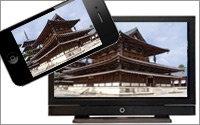 In the
years before the smartphone era, the conventional wisdom among early mobilistas was that the U.S. was behind the Pacific Rim and some parts of Europe when it came to mobile use, and certainly mobile
marketing. Japan had QR codes standardized when they still looked like wonky psychedelic posters on these shores. Rumor had it you could buy a soda from vending machines in Norway by 2006. And there
were mountains of case studies involving geo-fenced promotions and even mobile spam tales before most people here over 25 had figured out multi-tap.
In the
years before the smartphone era, the conventional wisdom among early mobilistas was that the U.S. was behind the Pacific Rim and some parts of Europe when it came to mobile use, and certainly mobile
marketing. Japan had QR codes standardized when they still looked like wonky psychedelic posters on these shores. Rumor had it you could buy a soda from vending machines in Norway by 2006. And there
were mountains of case studies involving geo-fenced promotions and even mobile spam tales before most people here over 25 had figured out multi-tap.
Since the iPhone and Android, which blew
through the U.S. markets first and appified us all, you don’t hear much talk about America being behind the world in mobile.
Except perhaps when it comes to second-screening? Really.
Don’t Americans own five TV sets per capita or something like that now?
advertisement
advertisement
Not so much. According to the latest global survey from Global Web Index, the share of North Americans ages 16 to 24 who regularly use their mobile devices while watching TV is 39%,
just slightly ahead of laggard Europe with 35%. Asia-Pacific, Middle East and Africa, and Latin America are all far ahead of us in this regard, even as you slice this just across the youngest, most
mobilized demo.
One reason for this lopsidedness is that mobile-first is a more prevalent model outside the U.S. where handsets are the primary tool for connectivity. But that explanation only
goes so far, since I assume even Americans with a lot of desktops most likely rely most on a device for connectivity when in front of a TV. Is it that the content on the first screen is just that much
more compelling? Nah!
More obvious is the connection between age demographics and second-screening. The worldwide average among 16- to-24-year-olds for using a device while watching TV is 66%
and only slightly less (62%) for 25-34. It descends quickly from there, to 49% among the 25-44 segment and 33% among 45-54s.
While connectivity during TV viewing is now an important part of
the experience for most people worldwide, in the U.S. only about 13% of viewers are using dedicated TV companion apps like Shazam or Viggle. Twitter, Facebook and other unrelated media still rule.
Which is to say that second-screening is not a deliberate activity so much as an incidental one. Obviously we could use some real ethnographic work here to understand behaviors in detail. But my
guess is that most people are tying the TV experience to the second screen only on special occasions where complementary activity really enhances things. Otherwise, TV drives us to a device in
haphazard and likely unpredictable ways.